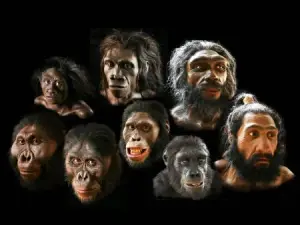In the movie ‘Society of the Snow’, the Spanish director JA Bayona has once again cleverly brought the issue of cannibalism to the screen. Released late last year, the film is a true story of an accident in the Andes mountain range.
On October 13, 1972, a plane crash occurred in the Andes mountain range while the rugby players of Montevideo Old Christians Club in Uruguay were traveling to Santiago, the capital of Chile, along with their friends and family members to participate in a tournament.
After the plane crash, some survivors had to eat the corpses of the dead to save themselves. However, it begs the question under what circumstances a man has to eat another man. There is evidence that humans may have lived as cannibals out of necessity in the course of human evolution. Some evidence suggests that humans were eating other humans in Kenya less than 14.5 million years ago.
Archaeologists found cut marks on the leg bones of the people of that time. This is the oldest evidence to say that the generations before us ate each other. But, another ancient evidence of cannibalism has also surfaced. It is known that people who lived in South Africa during the Plio-Pleistocene period, 25 million to 15 million years ago, may have had the habit of cannibalism.
Archaeologists have found incised marks and cutting tools on the jaws of hominids. Judging from this, it seems that all of the human species that lived in different societies were cannibals. For example, there is evidence that the primitive humans discovered by Columbus in America were cannibals. Some Pacific islands and other parts of the world also practiced cannibalism until recent times. Compared to warmer regions, arctic regions consume more animal food, especially during cold seasons. Animal fat is the main source of energy for those people.
In contrast, people in the Southern Hemisphere tend to eat foods that grow on the ground and are high in carbohydrates. The human race is forever dependent on fat, which requires omega-3 and omega-6 fatty acids to help the human brain function properly. Omega-3 deficiency can cause various diseases. Elephants and horses are higher in Omega-3 than reindeer. Our ancestors’ diet was largely based on what they hunted.
Stone Age hominids depended on certain animals for food. But what if animals with omega-3s were deficient? The answer to that too is clear. Rely on flax seeds, walnuts, etc., which are high in omega-3s. They can be used as a supplement to animal fat. Such food sources are unavailable during long periods of frigid weather in Eurasia.
This leads to severe omega-3 deficiency diseases.
Is there a link between omega-3 deficiency and cannibalism? For the reasons mentioned so far, animal-based food became a priority in Eurasia during the Stone Age, especially during the coldest periods. Due to the lack of carbohydrates, they met their energy needs with fats obtained from predators. This fat provides both omega-3 and omega-6. In earlier times, mankind was mostly dependent on reindeer.
Hominids ate each other for the omega-3 they needed to maintain their health under extreme conditions. 40 years ago primitive humans and modern humans hunted and ate each other. Hominids of the same species used to feed on each other. But they eat each other’s internal organs and fat. Therefore, the cut marks left on the bones when removing the meat are less visible. As a result, the researchers underestimated the actual cannibalism in the past.
Given the conditions in Stone Age Eurasia and other environments in earlier periods as described above, would there have been abundant sources of omega-3? Doubt comes. Food sources rich in omega-3 are found in the Southern Hemisphere. But, the required levels are not always available. In terms of nutritional quality, the human body never loses its appeal when it comes to getting nutrients easily. Researchers say that this is how hominids ate each other to survive.
